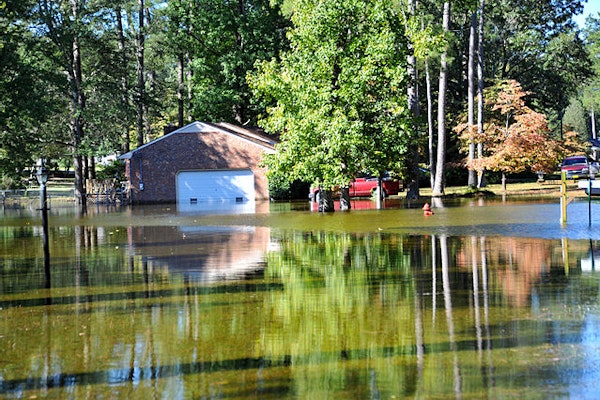
P/C Industry Nets $34.9B Underwriting Gain as Cat Losses Ease in 2025
AM Best reports a sharp recovery in P/C insurer profitability for 2025, helped by lower catastrophe losses and improved reserve development.
December 29
Auto
Catastrophe
Insurance Industry
Liability
Property

California Wildfires, Premium Hikes, and the New Economics of Homeowners Insurance
Catastrophe losses, inflation, and construction costs are squeezing insurers and driving up homeowner premiums—putting more pressure on claims professionals.
December 29
Catastrophe
Insurance Industry
Legislation & Regulation
Property
Risk Management

Cyber, Casualty, and Climate Shape 2026 Reinsurance Dynamics
Reinsurance capacity surged in 2025 amid historic low catastrophe losses, driving down rates and changing the risk-sharing landscape. Adjusters can expect shifts in how insurers deploy capital, respond to claims, and design coverages—especially in casualty, cyber, and catastrophe-exposed regions.
December 29
Catastrophe
Excess & Surplus Lines
Insurance Industry
Legislation & Regulation
Liability

Wild Pigs Cost Mississippi Farmers Millions Annually Despite State Trapping Efforts
Feral hogs cause massive crop losses and property damage, prompting state-supported trapping and control programs. For claims professionals, the risks tied to agricultural policies are escalating.
December 29
Catastrophe
Insurance Industry
Property
Risk Management
Underwriting
Mississippi

Top Holiday Risks Driving Property and Auto Insurance Claims
Frozen pipes, kitchen fires, icy walkways, and parking lot crashes make winter the busiest season for property and auto insurance claims. Here’s how adjusters can prepare.
December 22
Auto
Catastrophe
Fraud
Insurance Industry
Liability
Alaska
Maine
Minnesota

How Elastic Staffing Helps Insurers Handle Claim Surges and CAT Events
Carriers are rethinking claims and underwriting operations to meet volatile demand and rising costs. Elastic Staffing blends core leadership with vendor and tech support to create scalable, efficient teams.
December 22
Catastrophe
Insurance Industry
Risk Management
Technology
Underwriting

Wildfires and Hailstorms Drive $100B in Insured Losses Again in 2025
The 2025 Los Angeles wildfire was the costliest ever, but quieter, relentless storms caused even more damage nationwide. The result is soaring insurance costs and shrinking coverage options.
December 22
Catastrophe
Insurance Industry
Property
Risk Management
Underwriting
California
Florida
Texas

Insurance Protection Gap Grows as Premiums Climb and Weather Risks Rise
Extreme weather is driving up insured losses and exposing coverage gaps across Canada. Low-income and marginalized populations face higher risks, slower recovery, and increasing insurance costs.
December 22
Catastrophe
Insurance Industry
Property
Risk Management

Should Insurance Adjusters Hug Policyholders After Major Losses?
A candid Reddit discussion in the adjusters subreddit reveals how claims professionals balance empathy, boundaries, and risk when emotions run high after major losses.
December 18
Catastrophe
Education & Training
Insurance Industry
Liability
Property

NFIP Risk Rating 2.0 Premium Hikes Linked To Sharp Drop In Flood Insurance Policies
New research estimates premium changes under NFIP Risk Rating 2.0 reduced new policy counts and trimmed renewals, with the largest pullback in lower-income ZIP codes. For claims teams, the findings point to a wider protection gap and tougher recovery outcomes after flood losses.
December 18
Catastrophe
Insurance Industry
Legislation & Regulation
Property
Risk Management

2026 Claims Outlook Shows Regulatory Expansion Driving Cyber Claims Complexity and Expenses
As cyber and AI regulation expands, insurers and panel providers face increased claim costs and demand for specialized expertise next year.
December 18
Catastrophe
Fraud
Insurance Industry
Legislation & Regulation
Liability

Most US Homes at Risk of Underinsurance Despite High Policyholder Confidence
A new survey finds most homeowners believe they’re fully covered for disasters like floods and wildfires, but industry data shows many lack essential protections.
December 12
Catastrophe
Education & Training
Insurance Industry
Property
Risk Management
Arizona
California
Florida
Louisiana
Nevada

Fitch Forecasts 2026 P/C Insurance Results to Mirror 2024
Slower premium growth, stabilized catastrophe trends, and softening property rates are expected to shape a return to 2024-level underwriting performance in 2026.
December 12
Auto
Catastrophe
Insurance Industry
Legislation & Regulation
Property

Record Flooding in Washington Forces Over 100,000 to Evacuate
Days of relentless rain pushed Skagit and Snohomish Rivers beyond 1990 records, overwhelming infrastructure and triggering widespread evacuations.
December 12
Catastrophe
Insurance Industry
Property
Risk Management

State Farm Under Investigation Over $5B in California Wildfire Claims
California regulators and LA County are investigating delays, denials, and AI use in State Farm’s wildfire claims process after $5 billion in payouts.
December 11
Catastrophe
Legislation & Regulation
Technology
California





